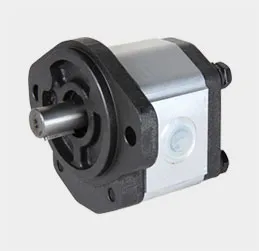Techniques for Forming and Shaping Sheet Metal Components
How to Stamp Sheet Metal Parts A Comprehensive Guide
Stamping sheet metal parts is a critical process in various manufacturing industries, from automotive to aerospace. This technique involves using a die to shape and cut metal sheets into desired forms, offering precision, consistency, and efficiency. In this article, we'll explore the fundamental steps and considerations involved in stamping sheet metal parts.
Understanding the Stamping Process
The stamping process generally entails several key phases designing, tooling, and processing. Initially, the design phase involves creating a detailed blueprint of the part you intend to produce. Computer-aided design (CAD) software is often used for this purpose, allowing engineers to visualize the component, specify dimensions, and detail other features.
Once the design is finalized, the next step is tooling, which involves creating the die. Dies are the tools used in stamping to cut or form the sheet metal into the desired shape. The design of the die is typically a crucial determinant of the final product’s quality and precision. Dies can be single-operation or progressive, where multiple operations are conducted in a series of stages.
Choosing the Right Materials
Selecting the appropriate metal sheet for stamping is vital. Common materials include aluminum, steel, copper, and brass, each possessing unique properties. Factors such as strength, ductility, and corrosion resistance will influence the choice of material. For instance, if high strength is required, high-strength steel or aluminum alloy might be appropriate, while copper might be chosen for its electrical conductivity in electronic components.
The Stamping Equipment
The stamping process typically requires several types of equipment, including hydraulic presses, mechanical presses, and CNC machines. The choice of equipment depends on the production volume, the complexity of the parts, and budget constraints. Hydraulic presses are often favored for larger, more complex parts due to their capability to exert significant force, while mechanical presses are preferred for high-speed production of simpler components.
how to stamp sheet metal parts

Setting Up the Stamping Process
1. Preparation Before beginning the actual stamping, ensure that the equipment is set up correctly, including calibrating the dies and adjusting the press settings according to the material thickness and type.
2. Launching the Process Place the metal sheets onto the stamping machine, ensuring they are aligned correctly. Safety measures should always be followed, such as wearing protective gear and ensuring that emergency stops are functional.
3. Stamping Start the press and monitor the stamping process closely. It's essential to check the output regularly to ensure it meets the design specifications and quality standards.
Quality Control and Finishing Touches
Once the stamping process is complete, quality control becomes paramount. Inspect the parts for any defects such as burrs, misalignments, or inadequate cuts. Employing methods like visual inspections, measurements with calipers, and using gauges can ensure each part adheres to the specified tolerances.
Following quality checks, finishing processes may be necessary. This could include deburring, coating, or additional machining to achieve the desired finish and performance characteristics of the part.
Conclusion
Stamping sheet metal parts is a vital manufacturing process that combines artistry with engineering precision. By understanding the steps involved—from design and material selection to equipment setup and post-stamping quality control—manufacturers can produce high-quality parts efficiently. As industries continue to evolve, mastering the art of metal stamping will remain a valuable skill, enabling the production of innovative and reliable components for a multitude of applications.
-
OEM Sand Cast Pump Valve Fittings - Baoding Hairun | Precision Engineering, CustomizableNewsJul.30,2025
-
OEM Sand Cast Pump Valve Fittings - Baoding Hairun Machinery And Equipment Trading Co., Ltd.NewsJul.30,2025
-
OEM Sand Cast Pump Valve Fittings - Baoding Hairun Machinery And Equipment Trading Co., Ltd.NewsJul.30,2025
-
OEM Sand Cast Pump Valve Fittings - Baoding Hairun Machinery|Precision Engineering&Fluid ControlNewsJul.30,2025
-
OEM Sand Cast Pump Valve Fittings - Baoding Hairun Machinery And Equipment Trading Co., Ltd.NewsJul.30,2025
-
OEM Sand Cast Pump Valve Fittings-Baoding Hairun Machinery And Equipment Trading Co., Ltd.NewsJul.30,2025















